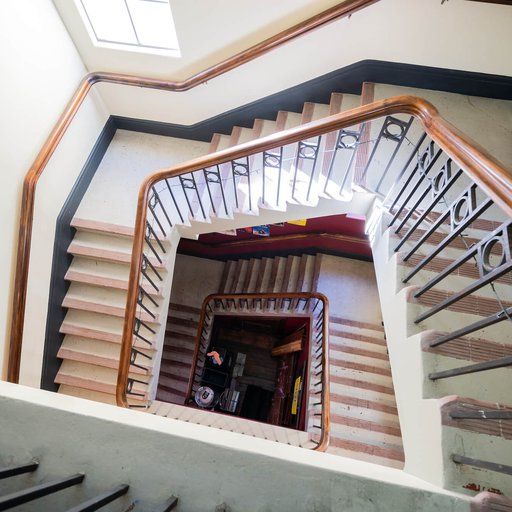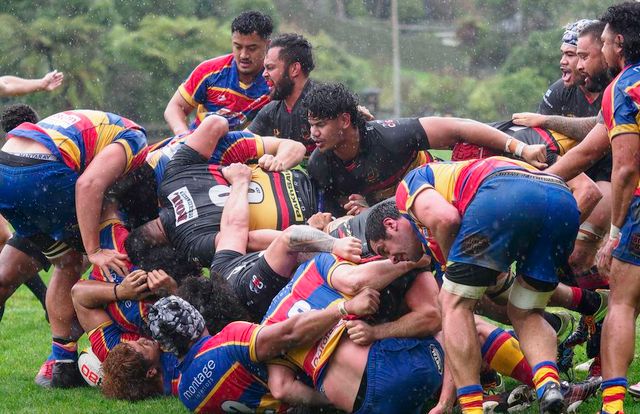Wellington and Places
-
-
WCC Proposals for some time limits in carparks.
- Newtown Residents' Association
- Wellington City Council are asking for feed back on some changes in local carparks – Newtown Park, Hanson St and Alexandra Park.
- Accepted from NRA news by feedreader
- Tagged as:
- newtown-park
- parking
- wellington
Newtown Park, Melrose, Wellington, Wellington City, Wellington, New Zealand (OpenStreetMap)
-
-
-
Torren Isaako – Aotea Sharp Shooter
- College Sport Wellington
- Porirua is a hotbed of Wellington sporting talent with countless personalities enjoying success at the national and international levels.
- Accepted from College Sport news HTTPS by feedreader
- Tagged as:
- porirua
- sport
- wellington
Porirua, Wellington Region, New Zealand (OpenStreetMap)
-
-
-
Athletics Wellington Awards Night
- Athletics Wellington
- Awards Night 2020 – Get your tickets now ! Date: Thursday 27 August Time: 6:00pm Venue: Newtown Park Function Room Ticket sales are now open for our Awards Night 2020.
- Accepted from Athletics Wellington 2019 by feedreader
- Tagged as:
- athletics
- newtown-park
- wellington
Newtown Park, Melrose, Wellington, Wellington City, Wellington, New Zealand (OpenStreetMap)
-
-
-
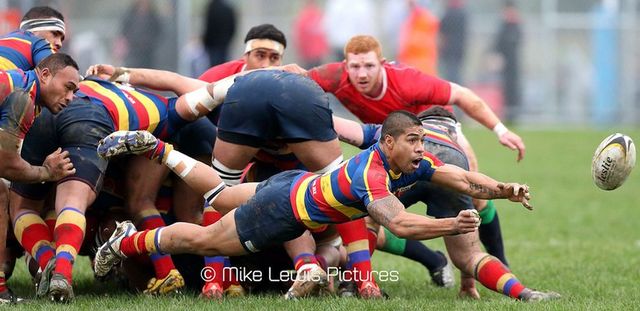
This week in History: 13-19 July
- Wellington Club Weekly
- Above: Isaac O’Connor (MSP) bears down on Steve So’oialo (Tawa) in their sixth round regular season match in 2013. MSP won this game 20-10 , but Tawa would win the final three weeks later. So’oialo’s brother James also features this week in history, for Northern United in 2009. See below for more. Some selected Wellington...
- Accepted from Club Weekly 2020 by feedreader
- Tagged as:
- tawa
- wellington
Tawa, Wellington, New Zealand (OpenStreetMap)
-
-
-
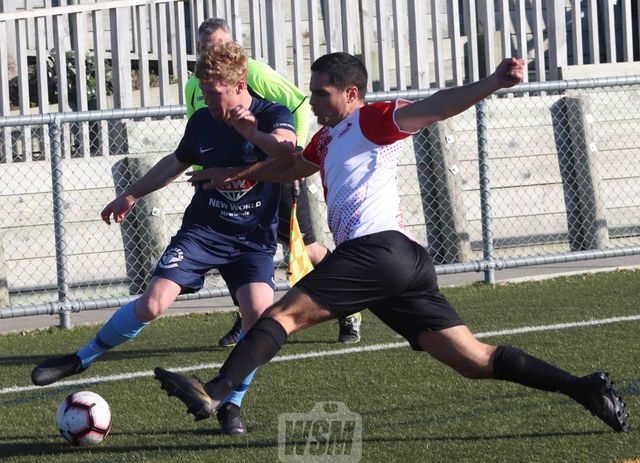
Capital Football | Waterside Karori shakeup the W-League
- Capital Football
- Waterside Karori have shaken up the Ultra Football W-League, handing Wellington United their first loss of the season. ...
- Accepted from Capital Football news 2020 by feedreader
- Tagged as:
- karori
- water
- wellington
Karori, Wellington, New Zealand (OpenStreetMap)
-
-
-
Wellington researcher joins world’s largest polar research expedition
- Victoria University of Wellington
- A Te Herenga Waka—Victoria University of Wellington scientist will become the first New Zealand researcher to join MOSAiC, the world’s largest international polar research expedition.
- Accepted from VUW News feed by feedreader
- Tagged as:
- wellington
-
-
-
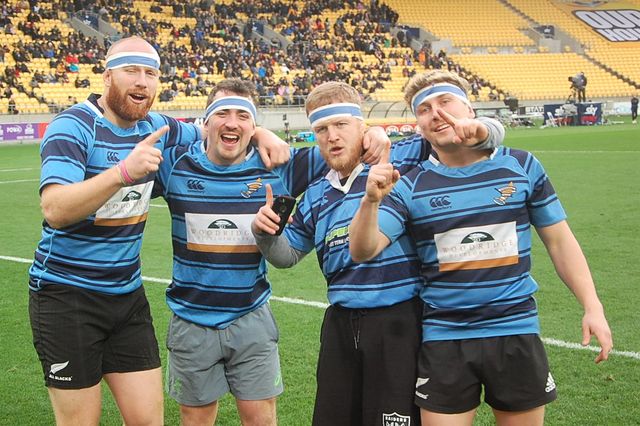
Short Passes 13 July (news in briefs)
- Wellington Club Weekly
- Above: Johnsonville’s winning sprint team from Hurricanes Club Night at Wellington Stadium yesterday, evoking memories of former Hawks wing Guy Davenport-Brown’s club sprint win at Athletic Park in the late 1990s. PHOTO: Peter McDonald. Round four of 13 of Wellington Premier club rugby is in the can, with just Tawa and OBU left standing...
- Accepted from Club Weekly 2020 by feedreader
- Tagged as:
- johnsonville
- tawa
- rugby
- stadium
- wellington
Tawa, Wellington, New Zealand (OpenStreetMap)
-
-
-
Time for a new funding model in ECE
- Victoria University of Wellington
- The Covid-19 crisis has exposed gaps in the funding of early education that we should be bold in responding to, writes Associate Professor Sue Cherrington of Te Herenga Waka—Victoria University of Wellington.
- Accepted from VUW News feed by feedreader
- Tagged as:
- covid-19
- education
- wellington
-
-
-
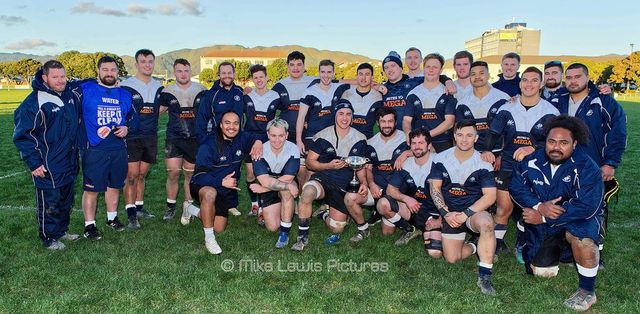
Petone and Norths come out on top in close games
- Wellington Club Weekly
- By Steven White and Adam Julian Petone (pictured above with the Bill Elvy Memorial Trophy) and Northern United won the two closest games of the fourth round of Wellington’s Premier Swindale Shield on Saturday, as all the home teams prevailed and Tawa and Old Boys University sit atop the standings as the only unbeaten teams....
- Accepted from Club Weekly 2020 by feedreader
- Tagged as:
- tawa
- petone
- swindale-shield
- wellington
Petone, New Zealand (OpenStreetMap)
-
-
-
Using groundwater to track earthquake movements
- Victoria University of Wellington
- Understanding how earthquakes affect the ground they travel through could be the key to understanding how buildings and structures aboveground will be impacted by a given earthquake, says Te Herenga Waka—Victoria University of Wellington Professor of Geophysics Martha Savage.
- Accepted from VUW News feed by feedreader
- Tagged as:
- art
- earthquake
- water
- wellington
-
-
-
Emelita Leota – Lighting Up Bishop Viard College
- College Sport Wellington
- Porirua is a hotbed of Wellington sporting talent with countless personalities enjoying success at the national and international levels.
- Accepted from College Sport news HTTPS by feedreader
- Tagged as:
- porirua
- sport
- wellington
Porirua, Wellington Region, New Zealand (OpenStreetMap)
-
-
-
Award-winning research communicates the impact of community gardens
- Victoria University of Wellington
- Bliss Graetz, a 4th year Master of Landscape Architecture student at Te Herenga Waka—Victoria University of Wellington, used her Summer Research scholarship to research the impacts of community gardens.
- Accepted from VUW News feed by feedreader
- Tagged as:
- architecture
- wellington
-
-
-
Summer research success for architecture illustrator
- Victoria University of Wellington
- Lauren Hayes, a 5th year Master of Architecture (professional) student at Victoria University of Wellington won Best Visual at this year’s Summer Gold Awards.
- Accepted from VUW News feed by feedreader
- Tagged as:
- architecture
- wellington
-
-
-
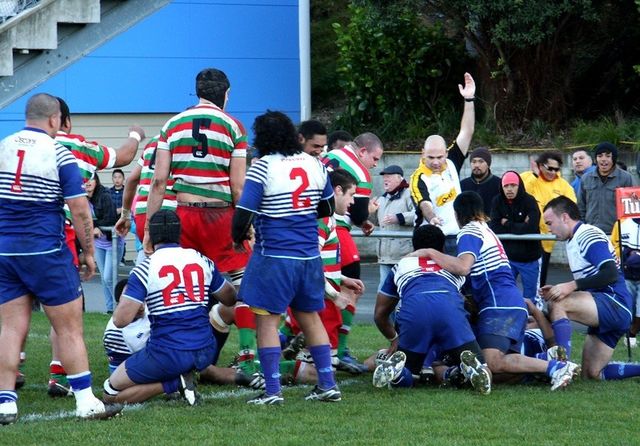
This week in History 6-12 July
- Wellington Club Weekly
- Above: This week in 2010 Norths and HOBM contested a dramatic 23-23 draw. A decade on, these two teams meet this coming weekend at Jerry Collins Stadium in round 4 of the 2020 Swindale Shield. Some selected Wellington club rugby memories from this week in history. 6 July 1957: Defending Jubilee Cup champions Petone are...
- Accepted from Club Weekly 2020 by feedreader
- Tagged as:
- stadium
- petone
- wellington
- swindale-shield
Petone, New Zealand (OpenStreetMap)
-
-
-
University researchers create innovative MRI technology
- Victoria University of Wellington
- In a collaboration between scientists and designers, Te Herenga Waka—Victoria University of Wellington researchers have developed new technology to make magnetic resonance imaging machines (MRIs) more comfortable, accessible, and affordable.
- Accepted from VUW News feed by feedreader
- Tagged as:
- design
- wellington
-
-
-
Specialist mental health and addictions service for Wellington general practices
- Capital & Coast District Health Board
- The Mental Health, Addictions and Intellectual Disability Service (MHAIDS) has launched a GP Liaison service to provide specialist mental health and addictions advice to general practices across the Hutt Valley, Wairarapa, and Wellington regions.
- Accepted from Capital Coast Health Feed by feedreader
- Tagged as:
- hutt-valley
- wairarapa
- health
- wellington
Lower Hutt, Wellington, New Zealand (OpenStreetMap)
-
-
-

Hataitai Intersection - Roundabout Proposal - Tues 7 July
- Hataitai Community Website
- Wellington City Council representatives are presenting the proposed roundabout for the Hataitai intersection.
- Accepted from Hataitai Community website posts by feedreader
- Tagged as:
- hataitai
- wellington
Hataitai, Wellington, New Zealand (OpenStreetMap)
-
-
-
Weekly Wrap Up (Week 12, Term 2)
- Wellington High School
- Important Dates Monday 20 July: Start of Term 3 Wednesday 22 July: Parents’ Evening (Senior Students) Monday 27 July: Parents’ Evening (Junior Students) Monday 27 July: Board of Trustees meeting 6pm Important Information Principal’s message In his end of term Principal’s message, Dominic reflects on the events of the past month including our recent open evening and music evening, events which, not so long ago we felt would be unable to take place. To read Dominic’s full report, click here. What’s happening? Open Evening and 2021 enrolment We welcomed over 400 families and whānau to our open evening last Monday on what was possibly the coldest night of the year. Our team of student and staff guides took tours around the campus, students were actively involved in promoting different areas of school life, and everywhere was alive and buzzing with activity. Enrolments are now open for 2021. Our enrolment process starts online at: https://portal.whs.school.nz/index.php/enrolment. If you have any questions, please email Jude Aspinall, our enrolment officer on jude.aspinall@whs.school.nz Music Evening Our Music Evening on Wednesday 1 July gave students the opportunity to showcase their talents. With a range of big band, groups and solo items, pieces in a range of styles and genres, it was a fabulous evening compered, as always by music teacher Fritz Wollner. To view the photo gallery, click here. Instrumental and vocal lessons update If your Junior student is interested in taking instrumental / vocal lessons but has not yet enrolled, please download the form from the Student Hub and hand in or email the completed form to Fritz Wollner Lessons will be reorganised for Terms 3 and 4. If students have not been attending regularly, they need to see Mr Wollner as soon as possible to ensure they do not lose their spot. Tamatha Paul – lunchtime lecture The Feminist Club was delighted to welcome Wellington Councillor Tamatha Paul to deliver this Thursday’s lunchtime lecture. Tamatha (Ngāti Awa / Waikato Tainui) was first elected to Council in 2019 and is one of three Pukehīnau / Lambton Ward counsellors for 2019-2022. As an independent candidate, Tamatha campaigned on issues including zero waste, connecting communities and the importance of prioritising future facing leadership. As can be seen from these pictures, Tamatha’s visit attracted a large audience, keen to welcome and listen to her. Year 10 Computing – Photoshop and political discourse Students in Gus Donaldson’s Year 10 computing course have been developing skills in Photoshop through working on a project on the theme of political discourse. Their work is currently on display in the foyer outside the library. The posters, with the narrative from their creators alongside them, are powerful pieces of work that clearly exemplify the students’ views and response to current issues in the world around them. The display will remain in place at the start of Term 3 and you are invited to come and view it. WHS Ink – Junior Art club zine 30 Year 9 and 10 students have been working on their own artwork during each week’s WHS Ink sessions. Coordinated by Teacher Aide, Connor Morrison-Mills, this group of talented students’ work is now included in their very own zine. Click on the image below to see more. Outdoor Education’s snowy tramp It has been cold enough for many this week, with the storms and freezing winds around Wellington. The Outdoor Education students showed their mettle by heading out on a tramp in the Tararua range earlier this week. They made it as far as the Powell Hut before the weather conditions made it too risky to continue and they turned back. Achievements He Kākano – AWD Tenpin Bowling On Thursday 2 July, He Kākano students competed in the annual AWD Tenpin Bowling competition against students from other Wellington colleges. All students and staff had a fantastic time and there were some really strong bowlers in the group. The top three WHS students were Talib Prime, Darius Ngature and Joshua Nathan. Roxy5 finalists ‘En Passant Films’ and ‘Look Away’ are both WHS finalists in the Roxy5 film competition this year. Screenings will take place on Friday 31 July at the Mclaurin Theatre, Victoria University. The winner will be announced at the Red Carpet awards evening at the Roxy Cinema on Wednesday 5 August. We are waiting eagerly to to see whether The Work of An Artist (En Passant Films) or Hey Cassie (Look Away) will scoop a place. Pictured below are En Passant Films: Sam Quinn, Rory Maher, Nym Jones, Liv Calder, Sky Gobbi, Jack Whitehead, Namu Dahlberg and Ashton Gordon. Open Evening: Business Studies Logo quiz winners Many thanks to all those students and whānau who entered the Logo quiz competition that ran at our recent open evening. The answers were: Air NZ, Disney, The Warehouse, Starbucks, Wellington HS, Te Papa, The Heart Foundation, Wellington City Council and Netflix. The winners were Toby, Tama, and Oscar. Sports Boys 1st XI Football On 27 June, our boys 1st XI football team beat Newlands College 4-0, taking them to the top of their pool. This Saturday the team will play St Patrick’s second team. If the team win or draw they will go into play-offs on 18 July against either Onslow College or Wellington College for a place in the Youth Premier Reserve. Good luck team!
- Accepted from WHS news by feedreader
- Tagged as:
- newlands
- tours
- issues
- bowling
- business
- music
- te-papa
- theatre
- wellington
- education
- art
- libraries
- storm
- snow
- lectures
- cinema
Wellington High School, Taranaki Street, Mount Cook, Wellington, Wellington City, Wellington, 6011, New Zealand (OpenStreetMap)
-
-
-
Project Update – Ngaio Gorge Road slope Stabilisation improvements
- Ngaio Progressive Association
- The following update on the Ngaio Gorge Road repair has been provided by Wellington City Council.
- Accepted from Ngaio PA News 2020 by feedreader
- Tagged as:
- ngaio
- wellington
Ngaio, Wellington, Wellington City, Wellington, New Zealand (OpenStreetMap)
-
-
-
Upcoming Roadworks in our area
- Ngaio Progressive Association
- We receive regular updates from Wellington City Council about upcoming roadworks.
- Accepted from Ngaio PA News 2020 by feedreader
- Tagged as:
- wellington
-
-
-
Lets Get Wellington Moving – Central City Consultation
- Ngaio Progressive Association
- The Let’s Get Wellington Moving (LGWM) team is seeking feedback on the Golden Mile – with a 26 July deadline.
- Accepted from Ngaio PA News 2020 by feedreader
- Tagged as:
- consultation
- wellington
- lets-get-wellington-moving
-
-
-
Wellington’s Antarctic Research Centre wins the Prime Minister’s Science Prize
- Victoria University of Wellington
- The world will be better prepared for the worst effects of climate change due to Antarctic ice-sheet discoveries by the Te Herenga Waka—Victoria University of Wellington-based winners of the 2019 Prime Minister’s Science Prize.
- Accepted from VUW News feed by feedreader
- Tagged as:
- wellington
-
-
-
Cervical cancer prevention, malaria vaccines receive funding of $2.5 million
- Victoria University of Wellington
- Te Herenga Waka—Victoria University of Wellington research projects aimed at improving rural access to cervical cancer screening services and developing a vaccine for malaria have received nearly $2.5 million in funding from the Health Research Council of New Zealand.
- Accepted from VUW News feed by feedreader
- Tagged as:
- health
- wellington
-
-
-

Feedback on the Golden Mile - by 26 July
- Hataitai Community Website
- The Let’s Get Wellington Moving team is seeking feedback on the Golden Mile until 26 July.
- Accepted from Hataitai Community website posts by feedreader
- Tagged as:
- wellington
-
-
-
Research reveals South Pole warming much faster than the rest of the world
- Victoria University of Wellington
- The South Pole is warming more than three times faster than the rest of the world, research by Te Herenga Waka–Victoria University of Wellington experts shows.
- Accepted from VUW News feed by feedreader
- Tagged as:
- wellington
-
-
-

Hardy to handle famous Wellington wind
- Wellington City Council
- A delicate flower wouldn’t fare well on Wellington’s waterfront – in fact there aren’t many plant species hardy enough to cope with the city’s harsh coastal conditions.
- Accepted from WCC news HTTPS by feedreader
- Tagged as:
- waterfront
- water
- wellington
-
-
-

Plimmerton Farm: getting greenfields right
- Talk Wellington
- If we’re hellbent on doing more residential development in greenfields, what does “decent” look like in Plimmerton, hilly land near an existing suburb – like most of our region’s greenfields? This post is basically a guide for anyone who cares about Plimmerton, good urban development, or healthy wetlands, streams and coast, but is time-poor and can’t face going through the truckloads of documents they’ve stuck up without any specific meta-guidance (some FAQ are here). Hopefully this will help you pop in a submission! PCC’s “information” pages they suggest you use for submitting. Every one of these is a large PDF document, 90% written in technical language… aargh! The background: what where and how For those who don’t know, Plimmerton Farm’s a big proposed subdivision of hilly farmland draining into the significant Taupō Wetland and to Plimmerton Beach, just over the train line and highway from Plimmerton village (original Ngāti Toa name: Taupō). It’s going through a Streamlined Planning Process, a pre-COVID government scheme for accelerating development. The key step is the requisite change of the land’s zoning in the Porirua District Plan (“rural” zone to “residential” and other “urban” zones) that sets out what kind of stuff can then be built, where. It’s mostly streamlined because there’s just one shot for the public to have input on the plan change. One shot. Why submit? I was born and raised in Plimmerton, live here now, and intend to for the rest of my days. I’d love to see it grow, well. I would love Plimmerton to get more wallets, more hearts and minds, more faces (more diverse ones too!). But not with more traffic, and pointless damage to our environment. Right now, the proposal has some serious flaws which need sorting. I say Sorting because the changes won’t make it crazy innovative, just good enough for a development in the spot it is, being kicked off in 2020. Time matters too: there’a a bunch of good things happening imminently (and some bad Porirua trends that need to be reversed). I cover these in Get it right, below. It’s worth submitting because given the situation, a 1990s-grade development just won’t cut it. So what about Plimmerton Farm needs to change? It boils down to two themes: dial down the driveability and dial up the liveabilitymake Local the logical and easy choice for daily needs I’ll outline what needs to change in each. NOTE: There’s a third – don’t stuff the wetlands and streams. This is really important as Taupō Wetland is regionally significant, and all our streams and harbours have suffered from frankly shameful mismanagement of sediment from earthworks-heavy subdivisions like Aotea and Duck Creek, and from the earthworks-a-rama of Transmission Gully. Friends of Taupo Swamp have an excellent submission guide for you – add in some of their suggested bits to your submission. I: Dial down the driveability, dial up the liveability There aren’t many truly black-and-white things in life, but there’s one for towns: If a street is nice to drive in, it’ll be a crappy place to do anything else in (walk / eat / hang out / have a conversation / play / scoot or cycle / shop / have a pint). If it’s nice to do anything else in, it’ll be a crappy place to drive in. Mostly this is because of the nature of the automobile: big solid things that smash into our soft bodies if someone makes a mistake (75% odds of death if that’s at 50km/hour, 10% odds of death if at 30km/hour) big objects that need lots of space for manoeuvering and especially parking – which offstreet can be crazy expensive and push up the cost of a home, and onstreet hoover up valuable public space. big solid things driven by us real humans (for a while at least) who respond to the environment but also get distracted, and generally aren’t good at wielding these big solid things safely. The transport setup proposed for Plimmerton Farm makes for a much too driveable and poorly liveable place. 1. Narrow down all the roads. The current proposal’s roading setup has roads and streets that are too big, and there’s too much of them. Right sized roads for a liveable community The cross-sections for the roads include on-street parking and really wide lane widths. This is really gobsmacking for a consortium that talked a big talk about good practice. For all the reasons that Low Traffic Neighbourhoods are good, this is bad. (And it’s especially nuts when you realise that the excessively wide “arterial” roads (11 metres!) will need earthworked platforms built for them where they’re drawn running up the sharp ridges and across the tops of gullies. Expensive, damaging for the environment, and … what were they thinking?) So recommended changes: NARROW DOWN THE ROADS. Seriously. Design all the living-area streets and roads, and the centre, to be self-explaining for an operating traffic speed of 30km or less – that’s the speed where mistakes are rarely fatal. What does that look like? The designers will know and if they don’t they should be fired. Narrower crossing distances; chicanes (great way to incorporate green infrastructure and trees and seating!); narrowed sight-lines (trees! sculpture!) so no-one driving feels inclined to zoom. Reduced trafficked lanes (rori iti on the larger roads!), with properly wide and friendly footpaths. Threshold treatments, humps, modal filters, all the things we know very well are the natural ways to slow us down when driving, and make streets nicer for people. The beauty of all this “restriction” on driving is how much it frees us up for making everything else appealing. Streets become hospitable for kids to walk, scoot, bike to school safely, using the road not the footpath. Older people and those with impairments can walk and wheelchair safely. Teens coming home from town of an evening can scoot or bike home, safely. Popping down to the shops or for a coffee or to the train becomes a pleasure to do on foot, or on a scooter or bike. And you’re moving in a legitimate way – seeing and being seen, not stuck off in the bush on a “recreational” track like what they’ve described. The ordinary streets and roads are walkable, bikeable, scootable, mobility-scootable, and perfectly driveable, equally safe and useable in all weathers and anytime of day or night. Used to be a big, fast road. Now, kids bike to school and old people can chill out on it. (Mark Kerrison) (And in case you’re worried about firetrucks / rubbish trucks / buses, recall that on even Wellington City’s far more winding, narrower hilly streets everyone gets their rubbish collected and fires fought just fine. On public transport, smaller buses, like those that community transport operators use, are the way of the future for less densely-populated areas like this). Don’t build the through and loop roads. You don’t need signs like this when the only people who bother to drive in are those who live there, or who are visiting friends, because you just have to drive out again the way you came. When it’s the place you live, you’re invested in not being a dick far more than if you’re just out for a drive – or worse, out for a bit of a boyrace hoon on a massive loop route through a whole place. So just don’t build those big connector roads that enable people to drive easily from one residential area to the next, especially the ones up in the hilltops (section C) that just say “come for a hoon!” Instead, connect the living spaces heavily with bikeable, walkable, scootable, disability-friendly streets and lanes, and as much as possible, only one way in and out for cars from each living area. II: Make local logical and easy Plimmerton is a true village, with a great little centre (including a train station!) but Plimmerton Farm is ultimately a damn big area. The way to go is to enable people to get the basics of life – like school, groceries, a coffee – with a little local trip on foot, bike or scooter – it’s more of a bother to get in the car. Right now though, it needs two changes: 1. Provide for a second centre “Bumping into” spaces are known to be crucial to a feeling of neighbourhood, and in the (initial) absence of third places (worship places, community hall, sports club, cafe/pub, a supermarket is a vital social centre. Yet the north end of Plimmerton Farm is currently a deadzone for anything except residential. What things will probably look like under current layout. Like in Edwards Scissorhands without the interest of a castle. There’s no provision for a place to do your household groceries, so people will drive to Mana New World – more car trips – and less opportunity to bump into people who live nearby. (There’ll be no school in Plimmerton Farm for a while, because Ministry of Education isn’t allowed by the Education Act to build a school somewhere until there’s a certain population density of kids to fill it. A shitty Catch-22 for developments which is hopefully going to be fixed … sometime. Just another reason to make walking, biking and scooting really kid-friendly, as extra dropoff traffic for kids going to St Theresa’s, Plimmerton School, Paremata and Pukerua Bay schools will be a nightmare.) So they should provide for an additional centre in the north, including a groceries place of some kind. 2. Intensify within walking distance of Plimmerton proper. We should intensify properly, with lots of medium and even some high density (6 storeys of nicely laid-out density done well!) in the area that’s within a 5-minute walk of Plimmerton Village. The more people can live and work with access to all its many amenities, and its rail station (10 min to Porirua, 30 min to Wellington), the better. But there’s not enough density provided for there. Plimmerton Railway station: buzzing in 1916 and has only got bigger. (Photo: Pātaka Porirua Museum) So they should add another zone – E – of higher density in that 5-minute walking catchment of Plimmerton Village. What could it look like? A good example is 3333 Main, Vancouver . Submission tips On the site they ask you to fill in a Word or PDF form, saying which specific bit of the gazillion proposals you are talking about and the specific changes you want. This is a BS way to treat the vast majority of people submitting: normal non-professionals, just regular people who care about good development and liveable places. So just don’t worry about that. In those question 6 column boxes just put “Transport” and “Layout”. It’s the professional planners’ job to figure out specifically how to change a planning document. Just be specific enough that they know what you want to see. The text above is worth copying and pasting – it’ll be enough. And don’t forget the Friends of Taupo Swamp and Catchment advice is essential – definitely go read and use. That’s all you really need – just go submit! But if you’re keen to know more reasons why they should be doing this better, here’s some… Get it right, now Once this plan change is through, traditional developers like Gillies like to whack in all the infrastructure – hello, massive earthworks. And yet the place will take decades to fill with actual people – those hearts and minds and wallets. (Note even before COVID, Porirua’s growth rate was 0.1% per year. Yep, one tenth of one percent.) And extra pressure’s on to do this better because all these things are features of the next one to three years: the One Network Road Classification (sets the design specs for roads of different types) is being updated right now to be more people-friendly in the specs for roads in residential and centre areas, so designs like Plimmerton Farm’s will soon be Officially Bad Practice Sales and riding of e-bikes and e-scooters are going through the roof, continuing through and beyond COVID – this shows no signs of slowing, and prices are dropping. E-power flattens the hills of Plimmerton Farm and makes wheely active travel a breeze for the middle-class people who’ll be living here, if the streets and roads are hospitablePlimmerton Railway Station (on the most popular Wellington train line) is being upgraded to be a terminus station – i.e. better servicesThe Wellington Regional Growth Framework is setting a bunch of directions for councils on how to grow well, including well-known but often well-ignored issues like intensifying around public transport hubs Councils will soon be required to do to a bunch of a bunch of international good practice including get rid of many minimum parking requirements (in the news lately), and to upzone (enable intensification) of landuse in the walking catchment of public transport hubs. (5 min walk = approx 400 metres, 10 min = 800m).Bad trends we need to stop: Porirua’s really high car-dependency (we own cars a lot and drive a lot) is continuing, due to car-dependent urban form [PDF]– despite nice words in council’s strategic intentions.People living outside Wellington City are mostly to blame for our region’s 14% increase in emissions from transport in just 10 years. OK go submit now – and share with anyone who you think might care!
- Accepted from Talk Wellington posts by feedreader
- Tagged as:
- paremata
- porirua
- transmission-gully
- sculpture
- government
- parking
- design
- covid-19
- law
- planning
- wellington
- education
- developments
- sport
- buses
- coffee
- zoo
- people
Wellington Zoological Gardens, Manchester Street, Melrose, Wellington, Wellington Region, 6021, New Zealand (OpenStreetMap)
-
-
-
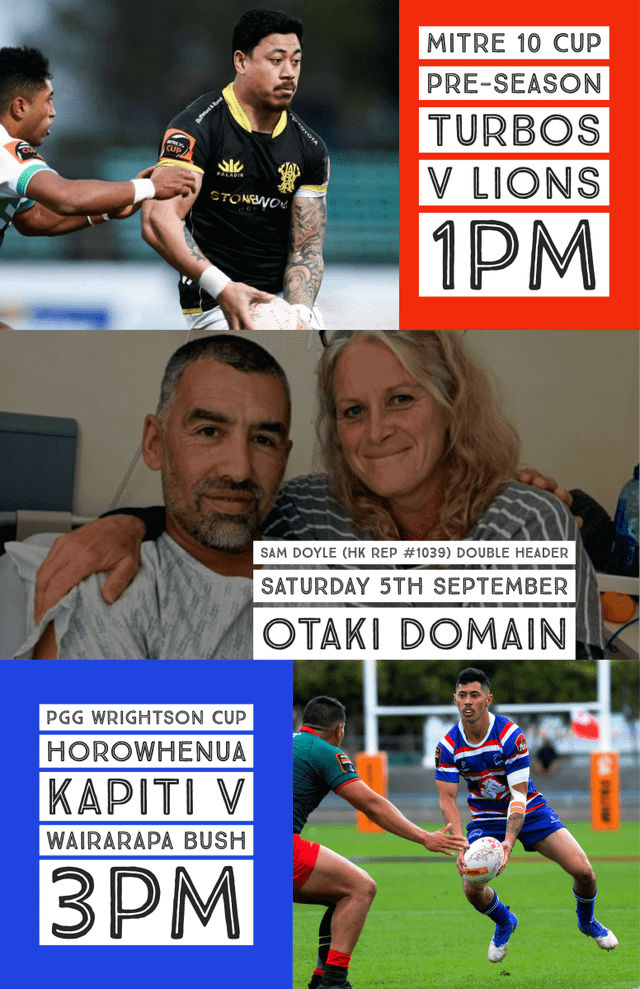
Ōtaki Domain Double Header for Sam’s Day
- Wellington Club Weekly
- Ōtaki Domain will be packed out for Sam’s Day on September 5th when Manawatū Turbos play Wellington Lions in a Mitre 10 Cup pre-season game and Horowhenua Kapiti take on Wairarapa Bush as a fundraiser for Sam Doyle. Three of the four teams in action once had Sam Doyle running around in their colours. Sam...
- Accepted from Club Weekly 2020 by feedreader
- Tagged as:
- kapiti
- wairarapa
- wellington
-
-
-
Weekly Wrap Up (Week 11, Term 2)
- Wellington High School
- Important Dates Monday 29 June: Open Evening 6pm Wednesday 1 July: Music Evening 7pm Friday 3 July: End of Term 2 Monday 20 July: Start of Term 3 Wednesday 22 July: Parents’ Evening (Senior Students) Monday 27 July: Parents’ Evening (Junior Students) Important Information Board of Trustees by-election results As a result of the recent Board of Trustees by-election, Dr Wyatt Page has been elected to the Board. Wyatt will join the Board with effect from the next meeting on Monday 27 July. Reports and parent-teacher meetings Learning Profile reports for Term 2 are now available for download from the Parent Portal (see Results > Reports). Parent Teacher meetings will take place on Wednesday 22 July (Senior students) and Monday 27 July (Junior students). To make appointments go to: Go to: https://www.schoolinterviews.co.nz/ Enter the code: vdm7q (Juniors) or 5yjhn (Seniors) Choose the SUBJECT then the TEACHER. Please leave a five minute gap between bookings. Note that we are only able to run one conversation with each teacher per student. If you are hearing impaired the Riley Centre can be a challenging environment: please email admin@whs.school.nz and we will aim to accommodate your bookings separately. Revised guidance on testing for COVID-19 The Ministry of Education has circulated the following information to all schools: At a time where there are increasing numbers of colds and other winter illnesses, the Ministry of Health has revised its guidance on who might need testing for COVID-19. It is important to note that there is currently no known community transmission of COVID-19 in New Zealand. The vast majority of adults, children and young people with symptoms consistent with COVID-19 will not have COVID-19. Symptoms of COVID-19 can include new onset or worsening of one or more of the following: Cough Fever Sore throat Runny nose Shortness of breath/difficulty breathing Temporary loss of smell Health’s information on who should get tested notes that people with any of the COVID-19 symptoms who are close contacts of confirmed cases, have recently travelled overseas, or been in contact with recent travellers, should get assessed. If anyone has symptoms but is unsure if they have been exposed to COVID-19, they should ring Healthline on 0800 358 5453 or their GP for advice. Over winter there are many other viruses about that can cause people to feel unwell and have symptoms similar to those of COVID-19. Some people with symptoms consistent with COVID-19 may be tested as part of Health’s ongoing surveillance to ensure that there is no community transmission in New Zealand. If they are not close contacts of confirmed cases, have not recently travelled overseas, or have not been in contact with recent travellers, then there is no need for them to self-isolate while awaiting the test result, and they can return to school once they are feeling well. If not recommended for testing, they will be able to return to school or their early learning service when they are feeling well and no longer displaying symptoms. Wallace Street roadworks update The current phase of the Wallace Street roadworks is due for completion by the end of the month. As long as the rain holds off, Wallace Street should be re-opened to through traffic on 1 July. Following this, however, works will need to get underway along Wallace Street, near Massey University’s entrance, to upgrade wastewater pipes. This will take place in off peak hours (9.00am-4.00pm) on weekdays and traffic will often be reduced to a single lane with Stop / Go control. This is likely to take two months to complete. What’s happening? Economists breakfast with Dr Allan Bollard On Thursday, Year 13 Economics students Sarah Bennett and Rachel Woolcott, attended a Cullen Breakfast at the Wellington Club. Speaking at this week’s breakfast was Dr Alan Bollard, who has held numerous senior positions in Government and interGovernmental agencies. Dr Bollard discussed the economic impact of the covid epidemic and then participated in a question and answer session. Sarah said “the range of angles in the topic discussed was thought provoking”. Rachel commented “it was a very interesting discussion and I enjoyed listening to his jokes and insight.” Year 13 performance of ‘Girls like that’ Evan Placey’s Girls Like That is an ensemble play that explores the pressures young people face today in the face of advancing technologies. Year 13 Drama students produced and performed this play this week. The students are to be congratulated for their sophisticated performance which was an enduring piece of theatre, an achievement all the more impressive when considering that much of this production was conceived and developed during lockdown. Congratulations to all, and to Drama teacher Roger Mantel. He Kākano The He Kākano students have been engaged in a range of creative activities, cognitive thinking skills and maths throughout the week. Winter in the garden The weather over the past few weeks has seen our horticulture students spend time on maintenance, cleaning and repairing tools including secateurs. They will be well prepared for winter pruning and work outside once the weather improves. Instrumental & vocal lessons update If your Junior student is interested in taking instrumental / vocal lessons but has not yet enrolled, please download the form from the Student Hub and hand in or email the completed form to Fritz Wollner Lessons will be reorganised for Terms 3 and 4. If students have not been attending regularly, they need to see Mr Wollner as soon as possible to ensure they do not lose their spot. Achievements National Bridge Speech competition place secured Year 13 Amelia Smith qualified for a place in the National Bridge Speech competition following her success in the regional Chinese speech competition last week. Amelia will represent the North Island outside Auckland region in the competition, to be held at Victoria University on Sunday 2 August. At that event, each qualified candidate will need to present a speech, perform to demonstrate a skill and answer questions in Chinese. Finalists will represent New Zealand and compete with candidates from all over the world in October. We wish Amelia luck as she progresses through the competition. Sports Junior girls football For the first time in many years WHS has a junior girls football team out in competition. Their most recent game resulted in a very close 2-1 loss but the girls had fun and were very impressive despite some players not having very much experience. This team could not have gone ahead without the support of parents who helped with both transport and officiating. Special thanks to Bea Gladding and Jennifer Argyle who are the coach/manager dream team who make this team possible. Below are some photos of the action and sideline support. Basketball Basketball is underway with all teams at WHS having played at least one game so far. Big thanks to Jason Reddish who is taking on the entire boys programme at school which includes four teams and doing a great job. Another big thanks to Nick Andrews who along with a parent is coaching the Senior girls team. Junior Boys play on a Tuesday and another junior team plays on a Thursday. All Senior teams play on Fridays, with the top boys and girls team playing at the ASB Centre. Below are some photos from the first junior basketball game. Boys 1st XI football The 1st XI played their first game of the season, bringing home a 5-1 victory against St Patrick’s Silverstream. Their next fixture is against Newlands College this coming weekend.
- Accepted from WHS news by feedreader
- Tagged as:
- newlands
- water
- government
- transport
- music
- covid-19
- theatre
- wellington
- education
- art
- basketball
- people
Wellington High School, Taranaki Street, Mount Cook, Wellington, Wellington City, Wellington, 6011, New Zealand (OpenStreetMap)
-
-
-
Keen interest in Wellington University COVID-19 scholarship
- Victoria University of Wellington
- There has been strong interest in the free tuition Te Herenga Waka—Victoria University of Wellington is offering to people affected by COVID-19.
- Accepted from VUW News feed by feedreader
- Tagged as:
- covid-19
- people
- wellington
-

